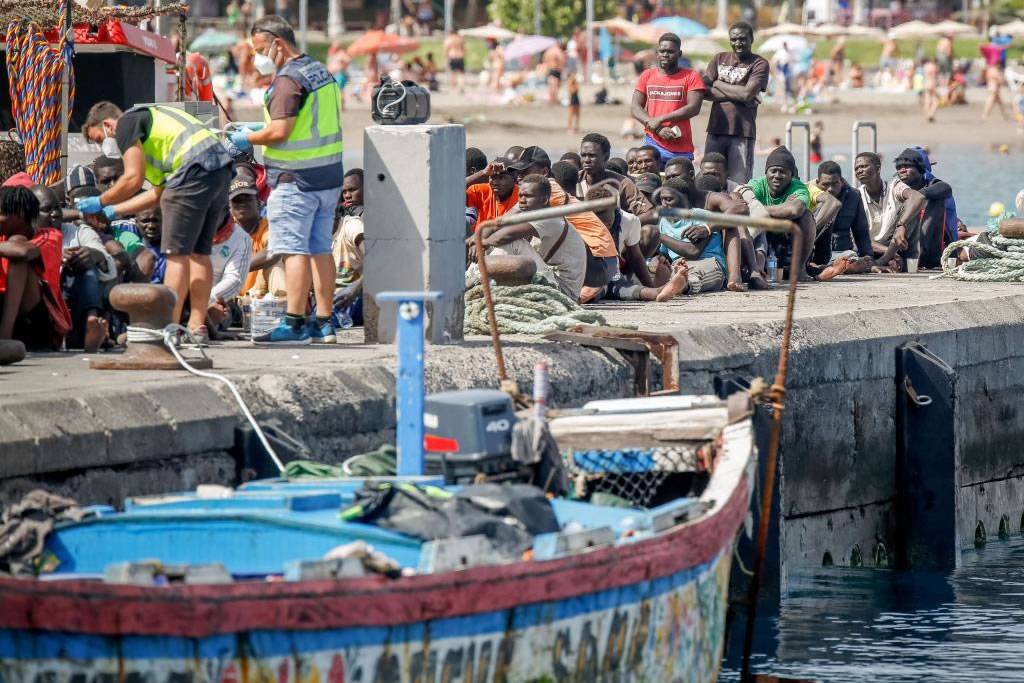503 migrants a day have arrived in the Canary Islands since the start of October
- 11-10-2023
- National
- Canarian Weekly
- Photo Credit: Efe
The Canary Islands received 4,531 immigrants in the first nine days since the beginning of October, arriving in 53 vessels at a rate of 503 people per day. These figures are unprecedented since the "Cayuco crisis" of 2006 when the number of migrants via the ‘Canary Route’ reached its historical peak.
According to official statistics given to Efe, with the high number of arrivals this weekend in Tenerife, Fuerteventura, Lanzarote, and Gran Canaria, the total number of rescued migrants in the Canary Islands now this year stands at 19,507 people, compared to 14,976 as of September 30th.
The official statistics do not break down the data by islands, but the Red Cross maintains its own detailed count, revealing that half of the arrivals since the beginning of the month are on El Hierro, with 2,367 in nine days (474 of them minors). This is followed by Tenerife with 703, Lanzarote with 518, Gran Canaria with 375, and Fuerteventura with 375.
The sum of these partial numbers (4,258) does not match the official figure (4,531) because the Red Cross does not include some of the vessels that arrived on Monday. Nevertheless, this territorial breakdown illustrates how in just nine days, El Hierro has become the island with the second highest number of arrivals (5,124), very close to the first, Lanzarote (5,285), and clearly ahead of Gran Canaria (4,023). This is due to the significant influx of Cayucos to the port of La Restinga on El Hierro this month.
The historical peak of arrivals in the Canary Islands through the Canarian route dates back to the "Cayuco crisis" of 2006 when 31,678 people arrived in the Canary Islands. The second-highest number (a record in the current period) was in 2020, with 23,271 rescues, according to the bi-monthly reports published by the Ministry del Interior.
The continuous flow of small boats received by the Archipelago in the past week, mainly focused on El Hierro and Tenerife, with several vessels carrying over 200 occupants, has already exceeded all arrivals in 2022 (15,682) by 3,825 people. One of these vessels set a new record with 271 people on board, the largest known to date in these waters.
In 2020, the Canarian route also experienced a significant peak in the months of October and November, accounting for 58% of the total arrivals that year (13,485 immigrants out of a total of 23,271).
If those two months are examined in two-week increments (which is the data published by the Ministry), it can be observed that even then, the arrival rates of this October were not matched.
From October 1st to 15th, 2020, an average of 134 people per day were rescued or reached the shores of the Canary Islands. From October 16th to 31st, that number increased to 206 daily, and from November 1st to 15th, it rose further to 356 daily. From November 16th to 30th, the number decreased to 187 daily. None of these two-week periods of frenetic activity matched the average of this October.
Other articles that may interest you...
Trending
Most Read Articles

Featured Videos
A Vision of Elvis Tenerife Promo
- 10-05-2025
TEAs 2025 Highlights
- 17-11-2025

























































